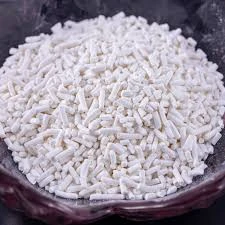
Cyanide's Role in Gold Extraction and Its Environmental Impacts
Cyanide Used for Gold Extraction A Double-Edged Sword
Cyanide has long been a controversial topic in the realm of gold mining. As one of the most efficient methods for extracting gold from ore, the cyanide process has enabled the production of millions of ounces of gold over the last century. However, the use of cyanide also raises significant environmental and health concerns, making it a double-edged sword in the mining industry.
Cyanide Used for Gold Extraction A Double-Edged Sword
Despite its efficiency, the use of cyanide is not without its drawbacks. Cyanide is highly toxic to both humans and wildlife. If mishandled, cyanide spills can lead to catastrophic consequences for ecosystems and communities living near mining operations. There have been numerous cases where accidental releases of cyanide have resulted in fish kills, contamination of water sources, and long-term damage to the environment. The infamous Baia Mare cyanide spill in Romania in 2000 and the Amajuba Basin spill in South Africa in 2008 are just a few examples that highlight the risks associated with cyanide use in mining.
cyanide used for gold

Moreover, the social implications of cyanide use cannot be ignored. Communities near gold mines often bear the brunt of the environmental degradation caused by cyanide leaks. This can lead to displacement, loss of livelihood, and health issues for local populations. The perception of cyanide mining can also incite public outrage and opposition, resulting in protests and legal battles.
In response to these concerns, there have been calls for stricter regulations around cyanide use in the gold mining industry. Some countries have outright banned the use of cyanide due to the potential risks it poses to health and the environment. Furthermore, the mining industry is under increasing pressure to adopt more sustainable practices, which include finding alternatives to cyanide for gold extraction.
Innovative methods such as gravity separation, bioleaching, and the use of non-toxic chemicals are being researched and implemented in various locations. These methods aim to mitigate the environmental impact of gold mining while still efficiently extracting gold. However, these alternatives are not yet universally applicable or as cost-effective as cyanide. As technology advances, the hope is that more eco-friendly solutions will emerge to replace traditional cyanide leaching.
In conclusion, while cyanide remains a vital tool for gold extraction due to its effectiveness, its use carries significant risks. The tension between economic gain and environmental preservation continues to challenge the mining industry. Greater advocacy for responsible mining practices and investments in safer alternatives is crucial for ensuring the health of communities and ecosystems. As we move forward, it is essential that the gold industry finds a balance that fosters both progress and sustainability, ultimately paving the way for a more responsible future in gold mining.
-
Aluminum Hydroxide: Quality Gels & Dried Gel AntacidNewsAug.31,2025
-
Buy High-Quality Trichloroisocyanuric Acid for Sale | TCCA 90% SupplierNewsAug.30,2025
-
Pure Sodium Dichloroisocyanurate Dihydrate | Powerful DisinfectantNewsAug.29,2025
-
Industrial Chemicals: Quality & Purity for Every IndustryNewsAug.28,2025
-
Nitrile Rubber Honoring Strict Production StandardsNewsAug.22,2025
-
Aspartame Ingredients Honoring Food Safety ValuesNewsAug.22,2025
-
Fertilizer for Balanced Plant NutritionNewsAug.22,2025
Hebei Tenger Chemical Technology Co., Ltd. focuses on the chemical industry and is committed to the export service of chemical raw materials.
-

view more DiethanolisopropanolamineIn the ever-growing field of chemical solutions, diethanolisopropanolamine (DEIPA) stands out as a versatile and important compound. Due to its unique chemical structure and properties, DEIPA is of interest to various industries including construction, personal care, and agriculture. -

view more TriisopropanolamineTriisopropanolamine (TIPA) alkanol amine substance, is a kind of alcohol amine compound with amino and alcohol hydroxyl, and because of its molecules contains both amino and hydroxyl. -

view more Tetramethyl Thiuram DisulfideTetramethyl thiuram disulfide, also known as TMTD, is a white to light-yellow powder with a distinct sulfur-like odor. It is soluble in organic solvents such as benzene, acetone, and ethyl acetate, making it highly versatile for use in different formulations. TMTD is known for its excellent vulcanization acceleration properties, which makes it a key ingredient in the production of rubber products. Additionally, it acts as an effective fungicide and bactericide, making it valuable in agricultural applications. Its high purity and stability ensure consistent performance, making it a preferred choice for manufacturers across various industries.





